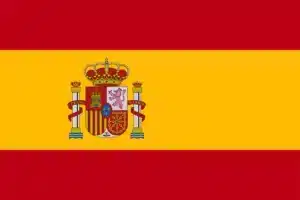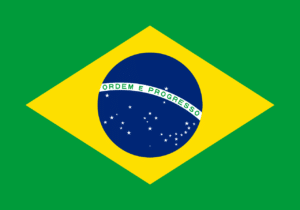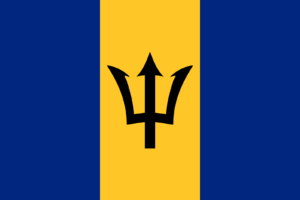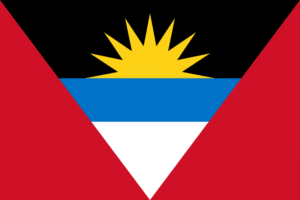What is a digital nomad visa?

A digital nomad visa is a type of residence permit that allows remote workers, freelancers, entrepreneurs, and self-employed professionals to legally live and work in a foreign country while earning income from clients or employers located outside that country.
Unlike a traditional work visa, a digital nomad visa does not require sponsorship from a local company or to have only local clients. Instead, you must prove your job can be done remotely and meet specific minimum income requirements.
In recent years, more than 60 countries offering digital nomad visas have launched programs to attract location-independent professionals. According to our Global Intelligence Unit’s Global Digital Nomad Report, after the COVID-19 pandemic, 91% of digital nomad visa programs were successfully introduced, with 25% being adopted shortly after launch. This surge reflects how the global shift to remote work has made digital nomad visas an increasingly popular way to live abroad legally.
How does a digital nomad visa work?
A digital nomad visa typically allows you to reside in a host country for 6 to 24 months, depending on the destination. Some visas, like Portugal’s, can be renewed or eventually converted into a longer-term residence permit.
To qualify, you generally need to:
- Show proof of stable income from foreign employment, freelancing contracts, or your own online business.
- Demonstrate valid international health insurance covering your stay.
- Provide documentation such as a clean criminal record, proof of accommodation, and identity documents.
Once granted, a digital nomad visa gives you the right to live, rent property, and sometimes open local bank accounts, while working exclusively for clients or employers based outside the host country.
However, it’s important to understand tax implications. In many cases, staying more than 183 days in a year can make you a tax resident, requiring you to file local tax returns, potentially leading to double taxation.
Digital Nomad vs Tourist Visa
While a digital nomad visa and a tourist visa may seem similar, they serve very different purposes and come with distinct legal rights and restrictions.
A tourist visa only allows you to visit a country for leisure or short-term stays, typically for up to 90 days within a 180-day period. You cannot legally work remotely on a tourist visa in many jurisdictions, even if your income comes from abroad.
In contrast, a digital nomad visa is designed specifically for remote workers, freelancers, and entrepreneurs who want to live abroad while working online for foreign clients or employers. This visa grants you a longer stay and provides a clear legal framework to work remotely without violating immigration laws.
Here’s a quick comparison of the two options:
Feature | Digital Nomad Visa | Tourist Visa |
Purpose | Living abroad as a remote worker or freelancer | Tourism and leisure |
Duration | 6 to 24 months (renewable in some countries) | Typically valid for 30 to 90 days |
Work authorization | Remote work for foreign clients is permitted | Working remotely (or any other capacity) is often prohibited |
Tax residency | Possible if you stay over 183 days | Less likely to trigger tax residency due to duration |
Income requirements | Must prove stable foreign income | No proof of income required |
Pros and Cons of Digital Nomad Visas
Pros
- Legal authorization to work remotely: Work for clients or employers abroad without worrying about breaching traditional work visa conditions.
- Longer stays: Enjoy extended residency in your chosen country, often renewable for multiple years.
- Stability and access to services: Some countries offering digital nomad visas allow you to open bank accounts, lease housing, or access limited healthcare.
- Attractive lifestyle opportunities: Many digital nomad programs are in destinations known for warm climates, affordable living, and vibrant expat communities.
Cons
- Minimum income requirements: You must prove sufficient income, which can be high in some countries.
- Tax residency risks: Staying over 183 days could make you a tax resident, requiring local tax filings.
- Complex application process: You’ll often need translated and certified documents, criminal background checks, and proof of insurance.
- Limited pathways to permanent residency: Most digital nomad visas do not lead directly to permanent residency or citizenship.
Countries Offering Digital Nomad Visas in 2025
Over 66 countries offer Digital Nomad Visas in 2025, with new countries announcing programs almost every day.
The countries that currently offer such a visa are:
Africa
Cape Verde | Seychelles |
Mauritius | South Africa |
Kenya | Namibia |
Middle East and Asia
Abu Dhabi, United Arab Emirates | Bali, Indonesia |
Dubai, United Arab Emirates | Goa, India |
Japan | Malaysia |
South Korea | Sri Lanka |
Taiwan | Thailand |
Türkiye | Vietnam |
Europe
Albania | Croatia | Cyprus | Czech Republic | Estonia | Georgia | Germany |
Greece | Hungary | Iceland | Italy | Latvia | Malta | Montenegro |
Portugal | Romania | Spain |
Americas and Oceania
Argentina | Belize | Brazil | Colombia |
Costa Rica | Ecuador | Mexico | Panama |
Peru |
Caribbean
Anguilla | Antigua and Barbuda | Aruba | Bahamas | Barbados | Bermuda |
Cayman Islands | Curaçao | Dominica | Grenada | Montserrat | Saint Lucia |
22 Best Digital Nomad Visa Countries
This list highlights some of the best digital nomad visas available in 2025. For a full list of all countries offering digital nomad programs, see our complete guide above.
 1. Portugal (Europe)
1. Portugal (Europe)
The Portugal Digital Nomad Visa launched in 2022 and remains one of the best options in Europe. It offers a one-year temporary stay visa or a longer-term residence permit. After five years, you can apply for permanent residency and potentially citizenship.
Visa duration | Minimum income | Tax rules | Renewable? |
1 to 2 years | €3,280/month | Tax residency if >183 days | Yes |
 2. Spain (Europe)
2. Spain (Europe)
Spain’s Digital Nomad Visa, created under the Startup Law, offers a renewable 12-month residence permit. Spain combines beautiful weather, good infrastructure, and access to the Schengen Area.
Visa duration | Minimum income | Tax rules | Renewable? |
12 months | ~€2,300/month | Tax residency over 183 days | Yes |
 3. Croatia (Europe)
3. Croatia (Europe)
Croatia’s Digital Nomad Visa allows you to stay up to 12 months without paying taxes on foreign income. This beautiful Balkan country is popular for its low cost of living and coastal atmosphere.
Visa duration | Minimum income | Tax rules | Renewable? |
12 months | €2,300/month | No local tax on foreign income | No |
 4. Estonia (Europe)
4. Estonia (Europe)
The Estonia Digital Nomad Visa is a pioneering venture, with the country being the first in Europe to launched one in August 2020. Estonia is well-known for its digital society, innovative startup culture and beautiful natural landscapes.
Visa duration | Minimum income | Tax rules | Renewable? |
12 months | €3,500/month | Tax residency if >183 days | No |
 5. Germany (Europe)
5. Germany (Europe)
Nomadic workers can apply for a German Freelance Visa, which allows holders to work with different startups, businesses, or individuals on part-time contracts or a needs basis. This visa offers a pathway to permanent residency in a country known for its strong economy and high quality of life.
Visa duration | Minimum income | Tax rules | Renewable? |
6 months to 3 years | Varies by region | Tax residency applies | Yes |
 6. Greece (Europe)
6. Greece (Europe)
Greece’s Digital Nomad Visa grants one year of residence, renewable for up to three years. It’s ideal for remote workers seeking warm weather, affordable living, and a vibrant cultural scene.
Visa duration | Minimum income | Tax rules | Renewable? |
12 months | €3,500/month | Tax residency if >183 days | Yes |
 7. Italy (Europe)
7. Italy (Europe)
The Italy Digital Nomad Visa program was approved in 2022 and fully implemented by 2024. It’s an exciting new option with clear income thresholds. Many remote professionals are drawn to Italy for its diverse regions, ranging from the Alps to the Mediterranean coast, and its high quality of life.
Visa duration | Minimum income | Tax rules | Renewable? |
12 months | €2,600/month | Tax residency if >183 days | Yes |
 8. Malta (Europe)
8. Malta (Europe)
Malta’s Nomad Residence Permit is known for straightforward applications and an English-speaking environment. With year-round sunshine and a lively expat scene, Malta is a favorite for digital nomads who want an easy transition to island living.
Visa duration | Minimum income | Tax rules | Renewable? |
12 months | €2,700/month | Tax residency if >183 days | Yes |
 9. Montenegro (Europe)
9. Montenegro (Europe)
A relatively new program, Montenegro launched its digital nomad visa in 2024. It’s affordable and ideal for those seeking a quieter Balkan-style lifestyle. The country’s Adriatic coastline, mountainous national parks, and emerging co-working hubs make it increasingly popular with freelancers.
Visa duration | Minimum income | Tax rules | Renewable? |
2 years | €1,350/month | Tax residency if >183 days | Yes |
 10. Dubai, United Arab Emirates (Middle East)
10. Dubai, United Arab Emirates (Middle East)
Dubai’s Virtual Working Program provides tax-free living with world-class amenities. The city’s modern infrastructure, reliable internet, and excellent air connections appeal to entrepreneurs and remote workers alike.
Visa duration | Minimum income | Tax rules | Renewable? |
12 months | $5,000/month | No income tax | Yes |
 11. Thailand (Asia)
11. Thailand (Asia)
Thailand’s Long-Term Resident Visa is designed for high-income professionals. With affordable living costs and tropical beaches, it’s perfect for digital nomads who want to settle in the Southeast Asia region for longer periods of time.
Visa duration | Minimum income | Tax rules | Renewable? |
Up to 10 years | $80,000/year | Tax incentives for foreign income | Yes |
 12. Malaysia (Asia)
12. Malaysia (Asia)
The DE Rantau Nomad Pass makes Malaysia an affordable, tropical base. Many remote workers are drawn to the dynamic co-working spaces of Kuala Lumpur, the country’s capital, and Penang’s relaxed coastal lifestyle.
Visa duration | Minimum income | Tax rules | Renewable? |
12 months | $24,000/year | Tax residency if >183 days | Yes |
 13. Japan (Asia)
13. Japan (Asia)
One of the newest programs on the market, Japan launched its first digital nomad visa in 2025. Digital nomads can enjoy Japan’s blend of tradition and innovation, along with world-class public transportation and safety.
Visa duration | Minimum income | Tax rules | Renewable? |
6 months | ~$70,000/year | Tax residency if >183 days | No |
 14. Vietnam (Asia)
14. Vietnam (Asia)
Vietnam’s digital nomad program is affordable and appeals to remote workers with a love for the Southeast Asia region. From bustling Ho Chi Minh City to tranquil Da Nang, Vietnam offers a rich cultural experience and fast-growing digital infrastructure.
Visa duration | Minimum income | Tax rules | Renewable? |
12 months | ~$2,000/month | Tax residency if >183 days | Yes |
 15. Costa Rica (Central America)
15. Costa Rica (Central America)
Visa duration | Minimum income | Tax rules | Renewable? |
12 months | $3,000/month ($4,000 for families) | Tax exemption for foreign income | Yes |
 16. Mexico (North America)
16. Mexico (North America)
Mexico’s Temporary Resident Visa is flexible and renewable for up to 4 years. Popular hotspots like Mexico City, Playa del Carmen, and Oaxaca offer excellent amenities and thriving co-working scenes.
Visa duration | Minimum income | Tax rules | Renewable? |
1 to 4 years | ~$2,600/month or proof of sufficient savings | Tax residency if >183 days | Yes |
 17. Brazil (South America)
17. Brazil (South America)
Brazil’s visa has low income requirements and is renewable. Cities like São Paulo and Florianópolis are emerging hubs for remote workers who want vibrant culture and natural beauty.
Visa duration | Minimum income | Tax rules | Renewable? |
12 months | $1,500/month | Tax residency if >183 days | Yes |
 18. Argentina (South America)
18. Argentina (South America)
Argentina’s Digital Nomad visa, officially known as the Transitory Residence Visa, offers flexibility and low living costs. Buenos Aires is especially popular for its European architecture, café culture, and reliable internet.
Visa duration | Minimum income | Tax rules | Renewable? |
6 months | Proof of sufficient funds | Tax residency if >183 days | Yes |
 19. South Africa (Africa)
19. South Africa (Africa)
South Africa launched its digital nomad visa in 2024, combining vibrant cities and good infrastructure. Cape Town in particular, with its cosmopolitan culture and nature-heavy lifestyle, has become a magnet for remote professionals from all over the world.
Visa duration | Minimum income | Tax rules | Renewable? |
12 months | ~$3,000/month | Tax residency if >183 days | Yes |
 20. Barbados (Caribbean)
20. Barbados (Caribbean)
Barbados’ Welcome Stamp was among the first Caribbean programs. Remote workers are drawn to the island’s laid-back lifestyle, warm climate, and excellent internet infrastructure.
Visa duration | Minimum income | Tax rules | Renewable? |
12 months | $50,000/year | Tax exemption for foreign income | Yes |
 21. Antigua and Barbuda (Caribbean)
21. Antigua and Barbuda (Caribbean)
The Nomad Digital Residence Visa allows you to stay up to two years. The twin islands offer stunning beaches, sailing culture, and a welcoming expat community.
Visa duration | Minimum income | Tax rules | Renewable? |
2 years | $50,000/year | Tax exemption for foreign income | No |
 22. Bahamas (Caribbean)
22. Bahamas (Caribbean)
The Bahamas Extended Access Travel Stay (BEATS) program is a popular option for North Americans. This is due to its proximity to the U.S., making it a convenient and attractive base for digital nomads.
Visa duration | Minimum income | Tax rules | Renewable? |
12 months | Varies (proof of income required) | No income tax | Yes |
How much does a digital nomad visa cost?
The cost of a digital nomad visa varies by country and even region. Costs typically range from around $50 to several thousand dollars, depending on the destination, duration of the permit, and whether you’re including family members.
Below are estimated application fees for popular countries offering digital nomad visas in 2025. Keep in mind these amounts may change, and you should always verify with official immigration authorities before applying.
Country | Digital nomad visa cost |
Argentina | $200 - $250 USD |
Antigua and Barbuda | $1,500 USD (single applicant) |
Barbados | $2,000 USD (single applicant) |
Bahamas | $1,025 USD (single applicant) |
Brazil | $100 - $150 USD |
Croatia | €97 - €160 |
Costa Rica | $100 - $250 USD |
Dubai, United Arab Emirates | $611 USD |
Estonia | €80 - €100 |
Germany | €75 - €110 |
Greece | €75 - €100 |
Italy | €116 |
Japan | $130 USD |
Malaysia | $215 USD |
Malta | €300 + €27.50 (residency card) |
Mexico | $53 USD |
Montenegro | €100 - €200 |
Portugal | €180 + €320 (residence permit) |
South Africa | ~$150 USD |
Spain | €75 - €100 |
Thailand | ~$270 USD |
Vietnam | ~$150 USD |
Remember that some programs also require additional costs, such as:
- Document translation and certification.
- Apostille legalization.
- Biometric residence cards.
- Annual renewals.
Eligibility and Requirements for a Digital Nomad Visa
Whether you’re a remote worker, freelancer, entrepreneur, or self-employed professional, most digital nomad visas share similar eligibility criteria.
Eligibility criteria
- Be over 18 years old.
- Have valid health insurance covering the entire duration of your stay.
- Show proof of remote work or self-employment with clients or an employer outside the host country.
- Meet the minimum monthly income requirement (varies by country).
- Hold a clean criminal record.
- Have a valid passport (usually with 6+ months validity).
Required documentation
- Visa application form: Completed and signed.
- Valid passport: At least 6 months remaining before expiry.
- Passport-sized photos: Recent and compliant with specifications.
- Proof of income: Bank statements, employment contracts, or business invoices.
- Proof of remote work: Letter from employer or contracts with foreign clients.
- Health insurance policy: Valid for the entire stay.
- Clean criminal record certificate
- Proof of accommodation: Rental agreement or hotel booking.
- Professional qualifications: For some countries, evidence of your credentials.
Digital Nomad Visa Application Process
1. Research and choose your destination
Research countries offering digital nomad visas to compare things like:
- Minimum income requirements
- Visa duration and renewal options
- Application costs
- Tax implications
- Healthcare and lifestyle factors
2. Complete the visa application form
Most countries allow you to apply online through a government portal or e-visa system. You’ll need to:
- Create an account on the official immigration website.
- Fill out the visa application form accurately.
- Upload required documents in the correct format.
3. Gather and prepare required documents
Typical documents include:
- Valid passport (with 6 – 12 months remaining validity).
- Recent passport photos.
- Proof of income and remote work (employment letter or contracts).
- Health insurance certificate.
- Criminal background check.
- Proof of accommodation (rental agreement or hotel booking).
Remember, some countries may require certified translations, notarization, or apostille legalization.
4. Schedule an appointment (if needed)
Many programs require you to book an appointment at your nearest embassy or consulate to:
- Submit original documents
- Provide biometric data (fingerprints and photos)
- Pay application fees (some countries require payment in advance)
For example:
- Spain and Germany: In-person appointment usually required.
- Estonia and Barbados: Applications often completed fully online.
5. Pay the application fees
Digital nomad visa fees vary widely, ranging from $50 to over $2,000, depending on the country and whether you’re applying alone or with family.
-
Always keep a receipt or proof of payment, as you may need to include it with your documents.
6. Wait for processing
Visa processing times can range from 2 weeks to 3 months, depending on the country and application volume.
- Fast-track examples: Estonia and Dubai often issue decisions within 30 days.
- Longer processing: Germany, Italy, and Croatia may take up to 90 days.
During this time, check your email regularly for updates or additional document requests.
7. Receive your visa approval
If your application is approved, you will receive:
- A visa sticker in your passport, or
- A digital approval letter, which you can print and present when you arrive.
Make sure to read your approval notice carefully as it may include instructions for:
- Registering your local address.
- Obtaining a residence card.
- Scheduling an arrival appointment.
8. Enter the country and register locally
After arrival, you may need to:
- Register your address with local authorities.
- Apply for a residence permit card (biometric ID).
- Show proof of health insurance and income again.
For example, in Portugal, you must schedule an appointment with the Portuguese Immigration and Borders Service (SEF) upon arrival.
How Can Global Citizen Solutions Help You?
Global Citizen Solutions is a boutique migration consultancy firm with years of experience delivering bespoke residence and citizenship by investment solutions for international families. With offices worldwide and an experienced, hands-on team, we have helped hundreds of clients worldwide acquire citizenship, residence visas, or homes while diversifying their portfolios with robust investments.
We guide you from start to finish, taking you beyond your citizenship or residency by investment application.

Frequently Asked Questions about the Digital Nomad Visa
What is a digital nomad visa?
What is the difference between a digital nomad visa and a freelancer visa?
Both visas allow for people to do work that is not dependent on location.
The difference is in the clientele. A freelancer visa requires you to serve local clients in the country or to register as self-employed in the host country. However, a digital nomad visa restricts you to earning income exclusively from foreign clients or employers.
Which countries have the easiest digital nomad visas to get approved?
Countries like Portugal, Mexico, and Estonia are known for relatively straightforward application processes, clear income requirements, and faster processing times.
Can I switch from a tourist visa to a digital nomad visa while already in the country?
In some countries, you must apply for a digital nomad visa from your home country or legal country of residence.
However, other countries, such as Mexico and Croatia, allow you to switch your visa while already in the country.
Do I need to pay local taxes if I hold a digital nomad visa?
It depends on the country and how long you stay. Many countries require tax payments if you spend more than 183 days per year there (which can lead to double taxation), while others exempt foreign-sourced income.
Can I open a local bank account with a digital nomad visa?
Most countries allow digital nomad visa holders to open a local bank account (aka an offshore banking account), which is helpful for paying rent and utilities during your stay. Requirements to do this usually include proof of address, your visa information, and identification documents.
What happens if I lose my remote job while on a digital nomad visa?
Losing your income can affect your legal status as that can mean that you no longer meet the minimum earnings threshold.
Some countries may allow you to stay for the remainder of your visa validity, while others require you to notify immigration authorities and possibly exit the country.
Can digital nomad visas be used for remote freelancing and self-employment?
Yes. Most digital nomad visas permit freelancing or self-employment as long as your clients are outside the host country. You’ll typically need to show contracts or provide evidence of a consistent income stream.
Are digital nomad visas available for families with children?
Many countries, such as Portugal, Costa Rica, and Croatia, allow dependents to accompany the primary applicant. However, it does come with caveats such as needing to show higher income and provide additional documentation like birth certificates and health insurance for each family member coming with.
Do I need special health insurance to qualify for a digital nomad visa?
Yes. Most digital nomad visa programs require you to have proof of international health insurance. It must be valid for the entire duration of your stay and the policy must cover emergencies, hospitalization, and repatriation.
How long does it take to process a digital nomad visa application?
Processing times vary by country, typically ranging from 2 to 12 weeks. Some destinations, such as Estonia and Dubai, have faster online systems, while others require in-person appointments and will come with longer review periods.
Can I travel freely within the Schengen Area with a digital nomad visa issued by an EU country?
Generally, yes. If your digital nomad visa was issued by a country in the Schengen zone, it allows you to travel visa-free within that area for up to 90 days in any 180-day period. However, residence rights apply only in the issuing country.
Is there an age limit to apply for a digital nomad visa?
Most countries do not impose an upper age limit, provided you meet income and insurance requirements. Technically a lower age limit applies since you must be over 18 years old to apply in most cases.



